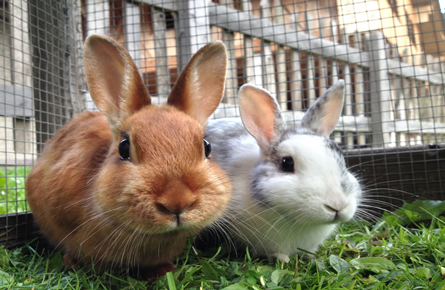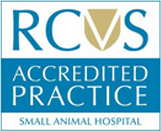Flea Treatment for Dogs
Dogs are at risk of contracting parasites as they are ever-present in our environment, but you can keep your pet safe by regularly providing them with tick, flea and worm treatment.
Fleas are small wingless insects that can cause problems for dogs by biting them. This can cause our pets to be very itchy and in some cases, animals are allergic to the saliva in the flea bite and the reaction is more severe - this is known as Flea Allergic Dermatitis.
A flea can bite up to 400 times a day- which can obviously cause very serious irritation. Fleas can also transmit diseases like tapeworm and Bartonella when they bite, therefore making protecting your pet against them very important.
All year-round flea, tick and worming treatment is just one of the many benefits of joining our Pet Health for Life Plan.
Ticks in Dogs
Ticks are related to spiders and have eight legs. There are several different tick species, and they vary in size from about 1mm to 1cm long. As they feed on your dog’s blood, they swell and become more obvious to see. They are common in grasslands and woodlands but can also be found in domestic gardens. They are in all areas of the United Kingdom.
You are most likely to come across ticks during the spring and autumn seasons, but they are active throughout the year. Unlike many other parasites, ticks do not fly or jump but climb or drop onto your dog's coat when they enter their habitat, especially in the long grass. Once on your dog, they screw themselves into the skin and feed on blood.
Ticks can irritate your dog and spread microbes that cause diseases such as Lyme disease and the potential for other diseases more prevalent in Europe. As a dog owner, it is good to use a tick treatment to either repel ticks or neutralise them. Tablets, spot-on treatments and collars are available to help fight ticks, and it is best to consult your vet about which is most suitable for your pet.
Book a flea and worm treatment appointment
Fleas in Dogs
Fleas are small, dark-brown insects that are prevalent across the United Kingdom. Fleas on dogs are more than just a summer problem as they can survive and bother your pet all year-round.
Dogs typically get infested with fleas through contact with other animals or fleas in their environment. This insect's robust back legs enable it to jump from a host or the surrounding environment onto your dog.
Fleas will make your pet uncomfortable and itchy; they can also pose a profoundly serious health risk. Severe flea infestations can cause anaemia due to blood loss caused by the parasites, and it can be fatal to puppies or immunocompromised dogs. Don't forget fleas feed on people too, and a flea infestation can easily get into your home.
There are numerous flea treatments on the market which provide year-round prevention. It is best to consult your vet to find the safest, most effective and most sustainable product for your dog. Spot on treatments and medication in tablets and injections are the preferred long-term flea control methods. Some products attack adult fleas, while others work by interrupting flea development – and some newer products on the market do both!
Book a flea and worm treatment appointment
Worms in Dogs: Lungworm, Roundworm & Tapeworm
The thought of worms in our canine friends can be very unpleasant and some of them can also be a risk to children and adults. However, understanding prevention options for worms in dogs is an integral part of responsible dog ownership.
Every dog is at risk for worms, no matter where they live or how much time they spend outside. There are three types of worms we worry about – roundworms, tapeworms and lungworms. Worms are usually transmitted through the faecal-oral method. That means that your pet may have come across microscopic parasitic eggs that are present in faecal material. Some worms, such as tapeworms, are transmitted via fleas. The parasite lives inside the flea, so when a dog accidentally eats fleas, they become infected. Some tapeworms can be transmitted when a dog eats raw meat.
Lungworm Advice for Dog Owners
Lungworm is a potentially serious and sometimes fatal condition that affects dogs. At Maven Vets, we urge dog owners to be aware of the signs of lungworm and to take steps to prevent this infection.
Lungworm is caused by a parasitic worm that resides in the heart and lungs of dogs. The infection can be caught after the ingestion of slugs, snails, or frogs carrying the larvae of the lungworm, and is more common in dogs that spend a lot of time outdoors.
The early signs of lungworm in dogs can be subtle and may be overlooked or mistaken for other conditions. These signs can include coughing, breathing difficulties, reduced appetite, weight loss and lethargy. If you notice any of these symptoms in your dog or suspect a lungworm infection, seek veterinary advice immediately.
Treatment of lungworm usually involves medications that are designed to kill the worms and reduce the inflammation and damage in the lungs. In some cases, dogs may need to be hospitalized for supportive care.
To help prevent lungworm infection, we recommend the following tips:
- Minimise your dog's exposure to snails, slugs and frogs.
- Clean your dog's water bowl regularly and avoid letting them drink from puddles or other outdoor water sources.
- Consider using a monthly preventative treatment that protects against lungworm.
- Regularly deworm your dog according to your vet's advice.
By following these tips and seeking prompt veterinary care if you suspect your dog has lungworm, you can help keep your furry friend healthy and happy.
Spread the Cost of Parasite Prevention With Pet Health for Life

Our Pet Health for Life Plan is a great way to spread the cost and save on your pet’s routine healthcare. You will receive all the essential treatments to keep your dog free from ticks, fleas and worms alongside routine checks which keep your dog in the best possible health and helps them lead happier lives.
Lungworm FAQs
What are the signs of lungworm in dogs?
Lungworm in dogs is a parasitic infection that can cause a range of symptoms. The signs of lungworm can vary depending on the severity of the infection, the age and health of the dog, and other factors. Here are some of the common signs of lungworm in dogs:
- Coughing - this is one of the most common signs of lungworm infection in dogs. The cough may be persistent and can sometimes be accompanied by phlegm or blood.
- Breathing difficulties - lungworm can cause breathing difficulties, including shortness of breath and wheezing.
- Decreased appetite - dogs with lungworm may show a decreased appetite and a general lack of interest in food.
- Weight loss - if the lungworm infection is severe, the dog may begin to lose weight rapidly.
- Lethargy - dogs with lungworm may show a lack of energy and interest in exercise or play.
- Vomiting - in some cases, lungworm infection can cause dogs to vomit.
- Changes in behaviour - dogs with lungworm may exhibit changes in behaviour, such as restlessness, agitation, or depression.
If you suspect that your dog may have lungworm, it is important to take them to see your vet as soon as possible. Lungworm can be a serious and potentially life-threatening condition, but it can be successfully treated if caught early.
How do dogs get lungworm?
Dogs can get lungworm by ingesting snails, slugs or frogs infected with lungworm larvae. This can happen when dogs accidentally eat these creatures, drink contaminated water or eat grass that has come into contact with infected snails or slugs. Lungworm infection is more common in dogs that spend a lot of time outdoors. Preventive measures include avoiding contact with snails and slugs, providing clean drinking water and regular deworming.
Can a dog recover from lungworm?
Yes, with appropriate treatment, dogs can recover from lungworm. Treatment usually involves medication to kill the worms and supportive care. Early diagnosis and treatment are crucial for a successful recovery. Preventative measures, such as regular deworming and minimising exposure to snails and slugs, can also help to reduce the risk of lungworm infection.
What are the first signs of lungworm in dogs?
The first signs of lungworm in dogs can include coughing, difficulty breathing, reduced appetite, weight loss and lethargy. If you notice any of these symptoms or suspect a lungworm infection, it is important to seek veterinary advice immediately for prompt diagnosis and treatment.
How quickly does lungworm take to develop?
The time it takes for lungworm to develop in a dog can vary depending on several factors, including the dog's age, immune system and the severity of the infection. In general, it can take anywhere from a few weeks to several months for a dog to develop symptoms of lungworm after being infected with the parasite. However, some dogs may not show any symptoms at all, making it difficult to know if they have been infected. If you suspect that your dog may have been exposed to lungworm, it is important to speak to your vet and have your dog tested for the parasite to ensure prompt diagnosis and treatment if necessary.
*Source: My Pet and I, March 2023
















